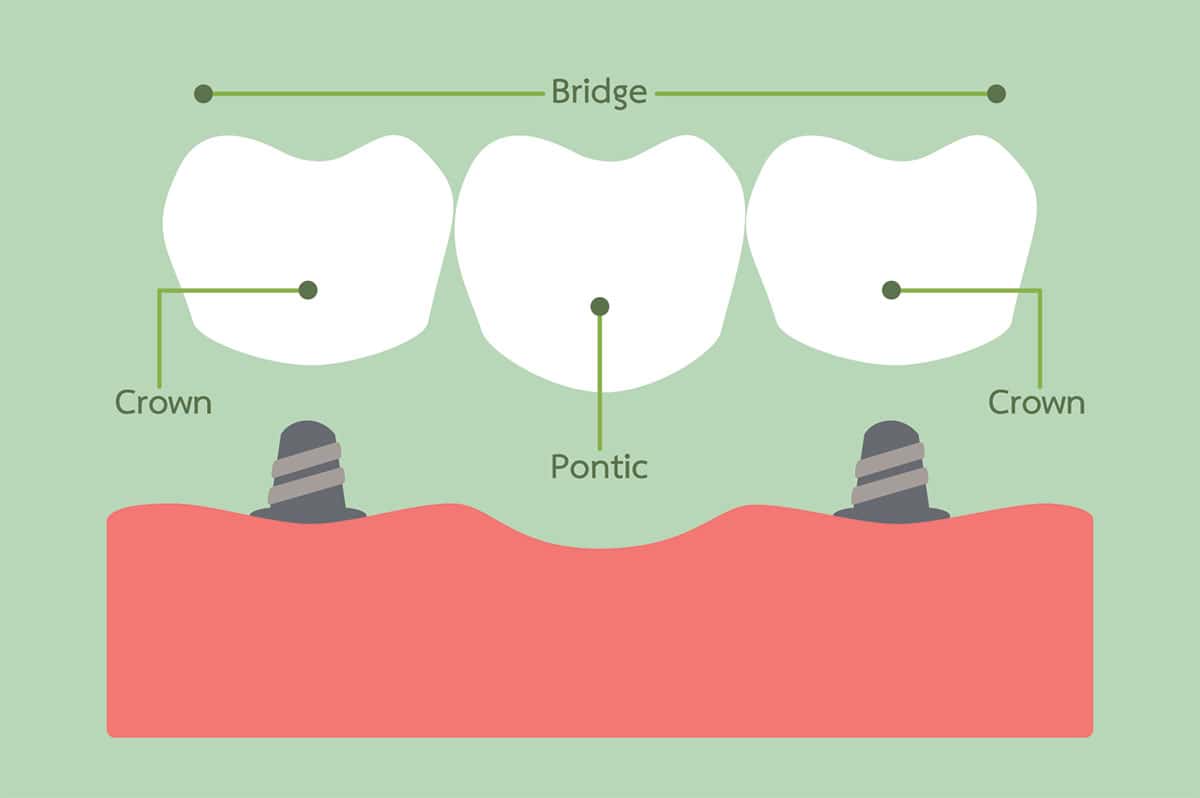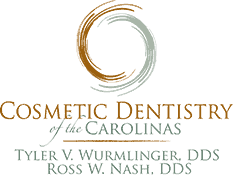Restore Your Smile
 Are you missing one or more teeth and looking for an effective solution to improve dental function? At Cosmetic Dentistry of the Carolinas, our experts understand the impact of tooth loss on a person’s confidence and overall oral health. Dental bridges are an effective option for improving your smile.
Are you missing one or more teeth and looking for an effective solution to improve dental function? At Cosmetic Dentistry of the Carolinas, our experts understand the impact of tooth loss on a person’s confidence and overall oral health. Dental bridges are an effective option for improving your smile.
About Dental Bridges
Dental bridges are custom-made dental devices designed to fill in the space left by one or more missing teeth; hence the name. They are secured to the neighboring teeth on both sides of the gap, effectively restoring the appearance, function, and alignment of the teeth.
Types of Dental Bridges
Our dentists provide different types of bridges, including:
Traditional dental bridge: A traditional bridge has crowns on both sides of the bridge with artificial teeth in between. The crowns are secured to the teeth near the gap, with the artificial teeth filling the space. This bridge type is the most common.
Cantilever dental bridge: This bridge type is similar to a traditional bridge but is used when the patient only has natural teeth on one side of the gap. A crown is used on the other side.
Maryland dental bridge: A Maryland dental bridge uses metal wings instead of crowns to anchor the bridge. It is often used to replace front teeth.
Implant-supported dental bridge: This option is also similar to traditional bridges, but the bridge is secured to dental implants instead of natural teeth. Patients with two or more missing teeth may benefit the most from an implant-supported bridge.
Benefits of Dental Bridges
 Dental bridges offer a number of advantages for patients dealing with tooth loss, including:
Dental bridges offer a number of advantages for patients dealing with tooth loss, including:
Restored appearance: Bridges effectively fill in the gaps caused by missing teeth, enhancing the appearance of the smile.
Improved function: By replacing missing teeth, bridges restore chewing function and allow patients to speak properly.
Prevent shifting teeth: Bridges help the surrounding teeth maintain their position. This helps prevent the teeth from shifting into the empty spaces.
Restored confidence: With a complete and natural-looking smile, patients can enjoy a boost in self-confidence.
Recovery
The time it takes to recover from this procedure differs from patient to patient and is influenced by many factors, including the type of bridge used. Generally, it takes around one to two weeks to heal completely, but some patients may need a little longer to adjust to the feel of the new bridge. Our dentists will be with you every step of the process to ensure you have a successful recovery.
After getting a dental bridge, it is important to maintain your oral health. Brushing twice a day and using toothpaste that contains fluoride should be part of your routine. In addition, you should floss daily to prevent plaque from accumulating. Consider mouthwash to keep your mouth clean while freshening your breath. Be sure to keep up with your routine dental appointments and cleanings to ensure optimal oral health.
Contact Cosmetic Dentistry of the Carolinas
For more information about dental bridges, schedule an appointment today.
